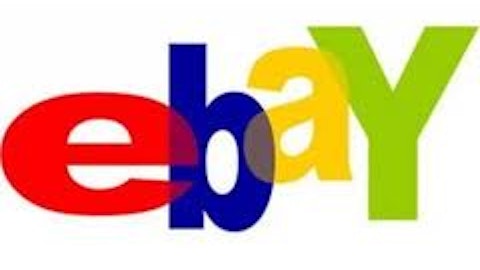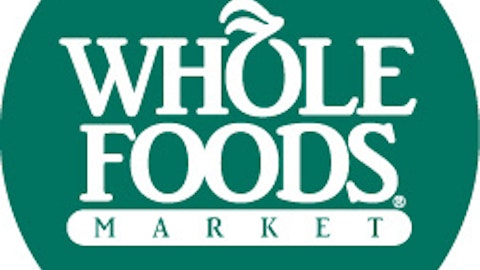
Consider supermarket giant The Kroger Co. (NYSE:KR), for example. You might be inside one of its stores, thinking about investing in the companies that produce the items it sells (pudding, chicken, paper towels), without thinking of investing in the market itself. You might want to add The Kroger Co. (NYSE:KR) stock to your portfolio, though. Why? Well, check this out: Kroger stock has appreciated by more than 50% over the past year. It has gained, on average, about 14.4% annually over the past 30 years, enough to turn $10,000 into about $566,000.
Of course, that’s not enough to base an investment decision on, so let’s take a closer look at the Kroger company and Kroger stock.
Meet Kroger
The Kroger Co. (NYSE:KR) was launched in 1883, fully 130 years ago, when Barney Kroger put his life savings of $372 into a Cincinnati grocery store. The Kroger Co. (NYSE:KR) stores were the first to have their own bakeries, which reduced the cost of bread for shoppers. Kroger was also the first to sell meats along with groceries in the same building. The company still makes many of its own products — almost half of the 14,400 private-label products in its stores. These generate 26% of Kroger’s grocery sales and boost its profit margins, as name-brand products tend to be more expensive at the wholesale level, in part due to manufacturers investing in advertising.
Today The Kroger Co. (NYSE:KR) is one of the world’s biggest retailers, with more than 340,000 workers, more than 2,400 stores, and operations in 31 states. Its locations recently included 786 convenience stores, 328 jewelry stores, 1,169 supermarket fuel stations, and 37 food processing plants. (Adding fueling stations to many of its locations has helped drive more business.) Store names under Kroger’s roof include Kroger, City Market, Dillons, Jay C, Food 4 Less, Fred Meyer, Fry’s, King Soopers, QFC, Ralphs, and Smith’s. Kroger operates about 1,900 in-store pharmacies and its many floral shops make Kroger the world’s largest florist.
An attractive stock
You might not find Kroger’s net profit margin impressive, but even its recent 1.6% level can be productive, given enough volume. And with Kroger raking in more than $96 billion annually in revenue, that’s enough to generate about $1.5 billion in net income. Putting the value of all Kroger stock together yields a market capitalization close to $60 billion. That’s big, but not too big to keep it from growing.
A peek at some of the characteristics of The Kroger Co. (NYSE:KR) stock via the company’s financial statements reveals it posting solid growth (with management projecting more), but also being saddled with considerable debt. That debt has been falling in recent years, though, and Kroger is cranking out substantial free cash flow that can help it keep paying down debt.
The dividend yield of Kroger stock was recently 1.8%, and it has grown by an annual average of about 11% over the past five years. Its payout ratio is very low, too, around 22%, suggesting plenty of room for further increases.
The stock’s valuation is appealing, with a recent P/E ratio of 12.4 comparing favorably with the company’s five-year average of 28, and a forward-looking P/E of 11.5 well below the S&P 500’s 14.6.
Kroger stock compares well with competitors, as well. Whole Foods Market, Inc. (NASDAQ:WFM) might have fatter profit margins, for example, but both its current and forward P/E ratios are above its five-year average of 28. Whole Foods Market, Inc. (NASDAQ:WFM) may be the go-to grocer for organic fare, but Kroger is increasingly offering organic items, as is even Wal-Mart Stores, Inc. (NYSE:WMT). Meanwhile, Wal-Mart Stores, Inc. (NYSE:WMT)’s current P/E is a bit above its 14.5 five-year average and its forward P/E a bit below. Its dividend, recently yielding 2.4%, has been growing faster, though, at a 15% average over the past five years. Wal-Mart Stores, Inc. (NYSE:WMT)’s revenue has been growing more slowly than Kroger’s.
The Kroger Co. (NYSE:KR) stock is worth considering if you’re looking for a solid long-term performer and a little dividend income. You might want to add it to your watchlist and review it further. A good place to start is the company’s own Fact Book.
The article Things to Know About Kroger Stock originally appeared on Fool.com and is written by Selena Maranjian.
Longtime Fool contributor Selena Maranjian, whom you can follow on Twitter, owns shares of Coca-Cola. The Motley Fool recommends Coca-Cola and Whole Foods Market. The Motley Fool owns shares of General Electric, International Business Machines, and Whole Foods Market.
Copyright © 1995 – 2013 The Motley Fool, LLC. All rights reserved. The Motley Fool has a disclosure policy.

